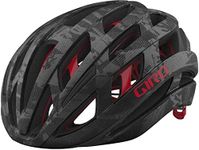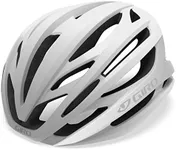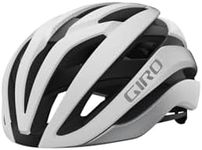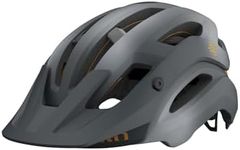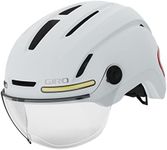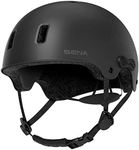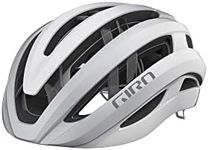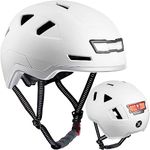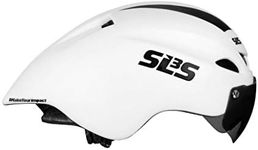Buying Guide for the Best Giro Bicycle Helmets
Choosing the right bicycle helmet is crucial for your safety and comfort while riding. A good helmet can protect you from serious head injuries in case of an accident. When selecting a helmet, consider factors such as fit, ventilation, weight, and additional features that can enhance your riding experience. It's important to find a helmet that meets safety standards and suits your specific riding style and needs.FitThe fit of a helmet is one of the most important aspects to consider. A helmet that fits well will stay securely in place and provide the best protection. Helmets come in different sizes, usually measured in centimeters around the head. To find the right fit, measure your head circumference and choose a helmet size that matches. Helmets often have adjustable straps and retention systems to fine-tune the fit. A properly fitting helmet should sit level on your head, with the front edge one to two finger-widths above your eyebrows, and should not move excessively when you shake your head.
VentilationVentilation refers to the number and size of vents in a helmet, which allow air to flow through and keep your head cool. This is especially important for long rides or riding in hot weather. Helmets with more vents generally provide better airflow but may be less aerodynamic. If you ride in warm climates or tend to sweat a lot, look for a helmet with ample ventilation. Conversely, if you ride in cooler conditions, you might prefer a helmet with fewer vents to retain warmth.
WeightThe weight of a helmet can affect your comfort, especially on long rides. Lighter helmets are generally more comfortable and less tiring to wear. Helmets made from advanced materials like carbon fiber tend to be lighter but can be more expensive. If you plan on long-distance rides or competitive cycling, a lighter helmet might be beneficial. For casual or short rides, the weight might be less of a concern.
Safety StandardsSafety standards ensure that a helmet can provide adequate protection in the event of a crash. Look for helmets that meet recognized safety standards such as CPSC (Consumer Product Safety Commission) in the US, CE (Conformité Européenne) in Europe, or AS/NZS (Australian/New Zealand Standard). These certifications indicate that the helmet has passed rigorous testing. Always choose a helmet that meets or exceeds these safety standards to ensure maximum protection.
Additional FeaturesAdditional features can enhance the functionality and comfort of a helmet. Some helmets come with integrated visors to shield your eyes from the sun, rain, or debris. Others have MIPS (Multi-directional Impact Protection System) technology, which can provide extra protection against rotational forces during a crash. Reflective elements or built-in lights can improve visibility in low-light conditions. Consider what features are important for your riding style and environment. For example, if you ride in urban areas, increased visibility might be a priority, while mountain bikers might benefit from a helmet with a visor.



